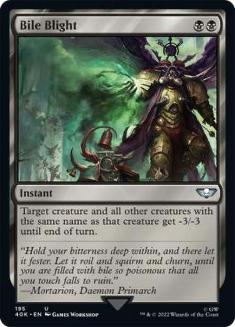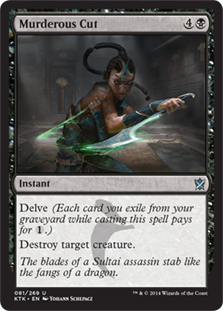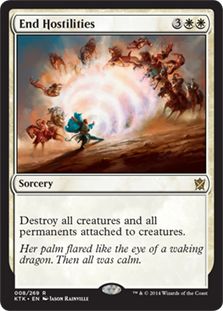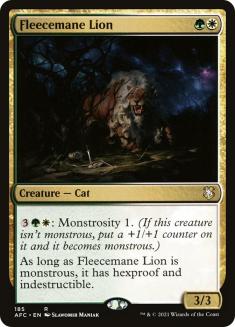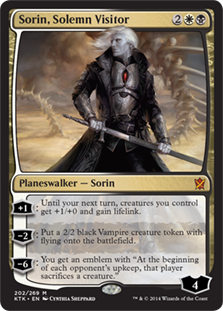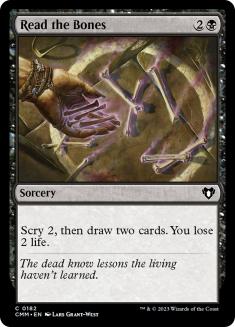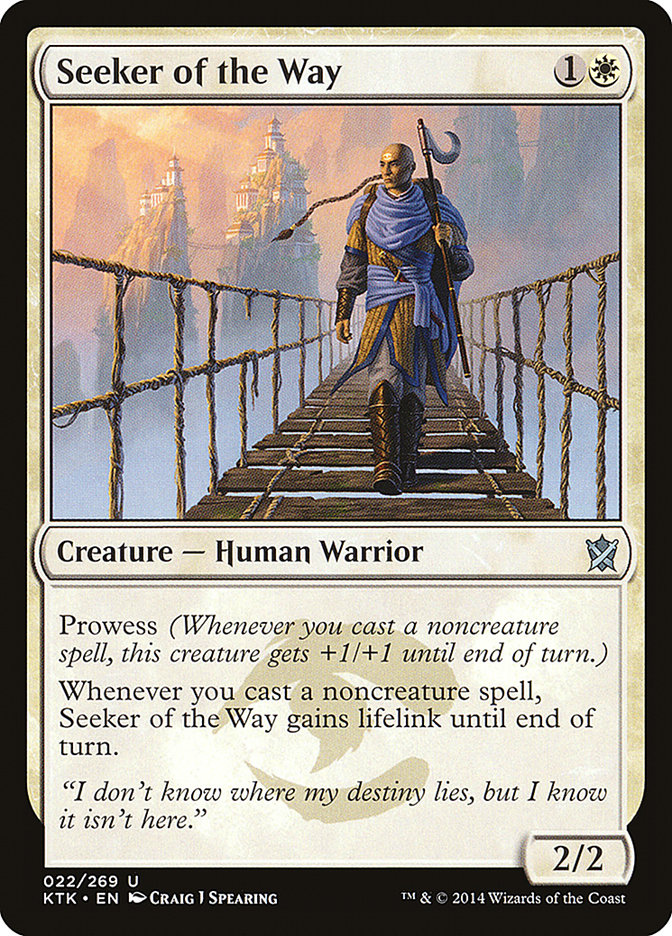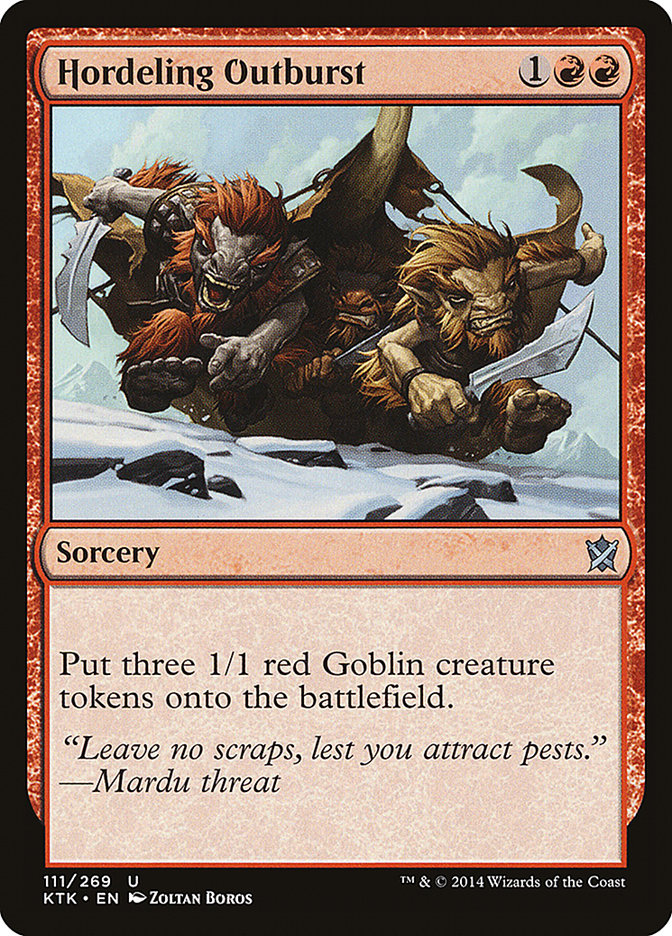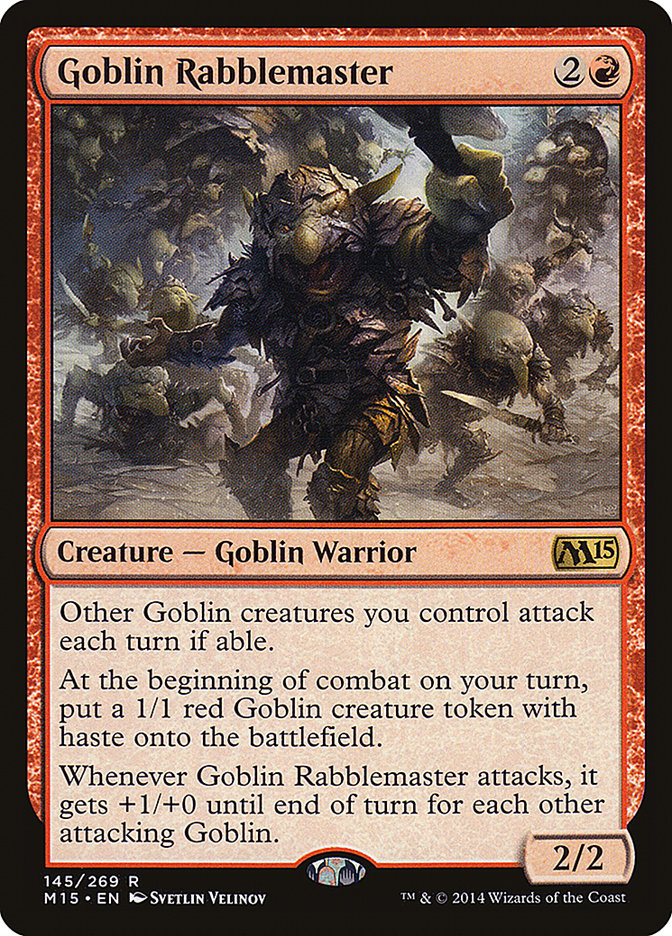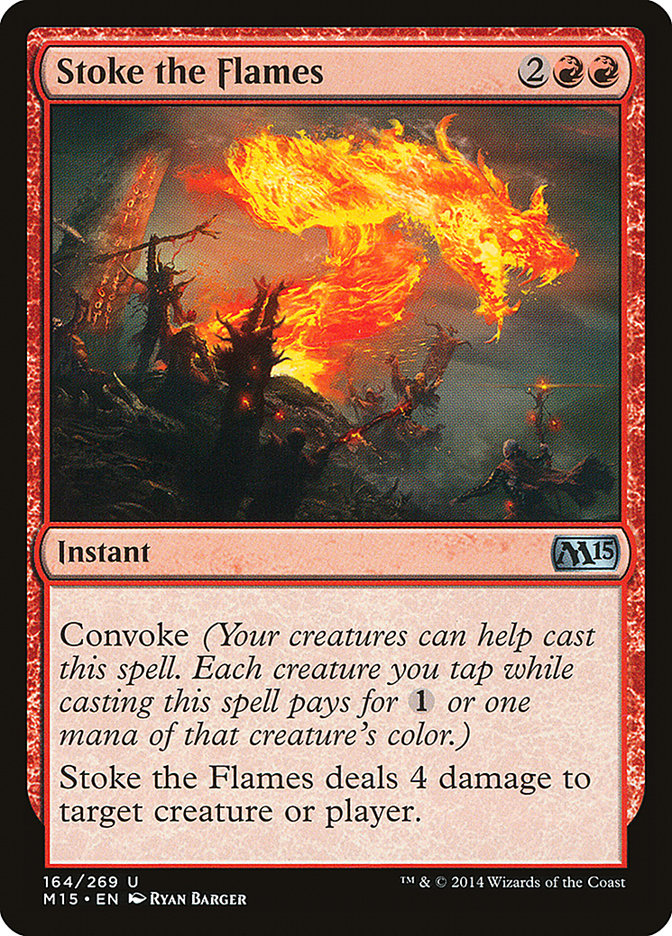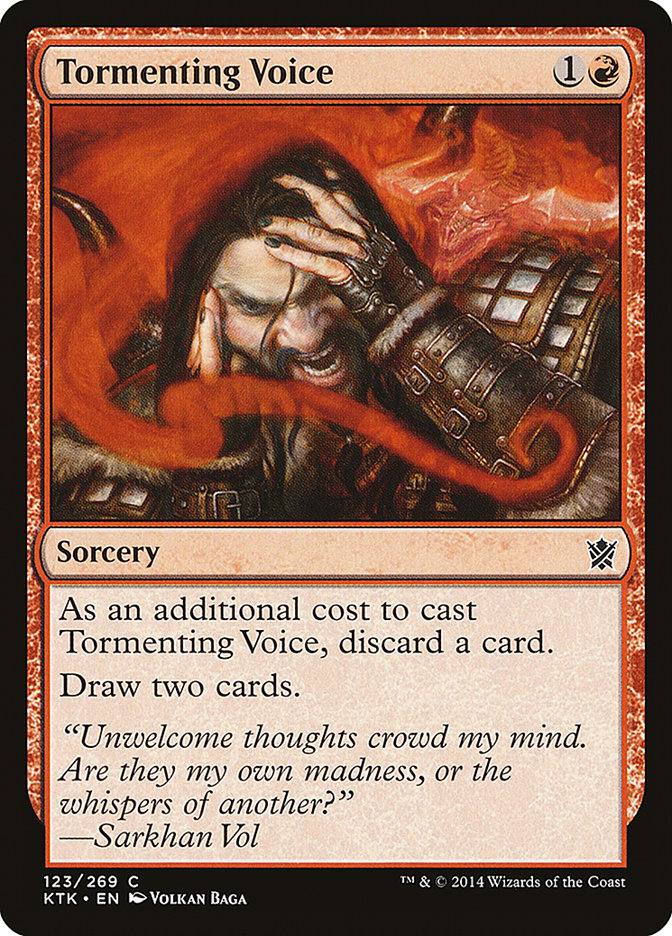Grand Prix Miami is right around the corner, and in the weeks since Grand Prix Memphis, if you’re like me, you’ve been playing a lot of Magic. Initially,
my plan had been to head down to Miami to play in that event, but I was taken down pretty hard by some sort of contagious crud in Memphis, and so now that
I’m out of the sick bed, I’m keeping it close to home and playing in a $5K in Chicago this weekend.
Whether you’re going to Miami or playing in another event coming up, if you’re playing out in the world or on Magic Online, most likely you’ve been playing
against a fair amount of Abzan Control, Sultai Control, or Ben Stark’s R/W Aggro list. That’s no surprise, since these three archetypes were the obvious
stand-outs from Memphis, but also simply because the three decks are fundamentally great.
Make no mistake, these three decks are also wildly different in their approach to the world. Abzan Control basically collects some of the best individual
cards in this flexible package that can take on anything. R/W Aggro can be built a lot of different ways, but Ben Stark’s build adds long-term resilience
on top of the early pressure, slowing the most explosive draws down in favor of the idea that he’ll never run out of gas. Sultai Control, the kissing
cousin of U/B Control, adds in Satyr Wayfinderer to the two-color control deck, providing the deck a ton of fuel for delve, and giving it access to very
powerful planeswalker trumps like Kiora, the Crashing Wave, which shuts down any single creature, or Garruk, Apex Predator, which can shut down opposing
planeswalkers or creatures alike.
One of the challenges to Standard right now is finding a deck that will be good enough against more than one of these decks. If you want to make a deck
that can take out any single one of these decks, that is fairly trivial. When decks are so powerful that they have no bad matchups, the ban hammer usually
comes down pretty quickly, and we haven’t seen even a hint that that is on the horizon. If you’re tired of these decks and want something different, you
still have to know what it is that you’re aiming at.
Target One: Abzan Control
Several players are calling Abzan Control the best deck in Standard, and they might be right. One of the biggest strengths of the deck is how, in
sideboarded games, it can look like an utter nightmare for nearly any opponent. Let’s look at Brad Nelson’s list from Memphis:
Creatures (10)
Planeswalkers (3)
Lands (26)
Spells (21)

Brad lost to Jack Fogle, the eventual champion, playing Sultai Control. We can tell by our maindeck that the deck is set up to fight a smaller deck than
Sultai. Against Jack, Bile Blight and the other removal cards just feel like a mostly dead draw. So, what is the dead weight?
From the board, obvious cards to bring in are:
Seven in, six out; a small shave into one of the good cards coming in or one of the cards you’re keeping in will be necessary. Either way though, when you
shuffle up that post-board configuration, what you have is a deck that is full of card advantage, threats, and disruption. When the deck is ‘punching down’
towards a Goblin Rabblemaster deck, for example, you can make similar shifts that are essentially creating a fortress that an aggressive player is going to
struggle to be able to overcome.
If you want an update on the deck, I’d suggest you go look to my friend Patrick Chapin’s article on the very subject. For my
purposes, Abzan Control is one of the enemies that we’re trying to take out. One of the real weaknesses of this deck is that it is much better at punching
down at the small deck rather than going toe-to-toe with a deck truly designed to get card advantage (like Sultai Control).
Onto the next target!
Target Two: Ben Stark’s R/W Aggro deck
Where Brad Nelson and the other Abzan Control players slow things down and answer situations again and again, Ben Stark’s list starts out the game with a
punch. Two draws that it can bring to the table are able to produce a ton of damage:
or
Now, obviously both of these draws are draws that can be answered. That’s where this little puppy comes in:
Ben’s deck slows things down quite a bit from a traditional R/W Aggro list, which might follow up these early plays with cards like Ashcloud Phoenix,
Sarkhan, the Dragonspeaker, or Stormbreath Dragon. Instead, Ben’s plan is, in game 1, to just not run out of spells because of Soulfire Grand Master and
Outpost Siege. Game 2, he has access to a little bit of those fliers, but overall, he’s just set up a little slower than the balls-to-the-wall style R/W
Aggro.
Here is his list, which placed second place at Memphis:
Creatures (12)
Lands (24)
Spells (24)

One of the weaknesses of this deck, especially in game 1, is that when things start to get out of control, it can be very hard to get things back under
control. In addition, it doesn’t have the luxury of a higher threat count to make it hard for an opponent to take control, eschewing that in favor of
resiliency.
Target Three: Jack Fogle’s Take on Sultai Control
That Gerard Fabiano has really been at it lately, tearing formats up. When the world first saw Gerard’s Sultai Control deck, there was a real
question of whether or not it was just going to be a flash in the pan. Since then, it has proven this is not the case, nowhere more dramatically than the
win by Jack Fogle in Memphis.
Creatures (4)
Planeswalkers (7)
- 2 Ashiok, Nightmare Weaver
- 2 Kiora, the Crashing Wave
- 1 Garruk, Apex Predator
- 2 Ugin, the Spirit Dragon
Lands (25)
Spells (24)

In a lot of ways, this super-friendly control deck is making a dedicated choice to move several steps down the path towards midrange control: an almost
mindblowing count of planeswalkers (seven!) and more dedication to discard than countermagic (only two main). This is a deck whose general answer to a
problem is typically “blow it up.”
This deck is especially well-suited to taking care of a threat on the table, but it does have a weakness to stopping powerful effects game 1. Three
Thoughtseize and two Disdainful Stroke give some degree of resistance here, but oftentimes, an effect is just going to happen, and you have to be able to
handle the aftermath.
Finding Answers
One of the things I was looking for in solving these problems could be summed up like this:
How could I go over the top of Abzan Control and Sultai Control, and still not fall to the earlygame of a deck like R/W Aggro? The answer began with
“Ugin,” but I didn’t know where it ended. In some ways, what I wanted was something like this:
I thought back to the preparations for Pro Tour Khans of Tarkir in Honolulu and remembered the work that was done on Team TCGPlayer with R/U Control. The
deck didn’t end up being good enough, but it felt almost good enough. One of the best parts of that deck was this little card.
Tormenting Voice just gave an incredible amount of fuel to the deck for Dig Through Time and Treasure Cruise, and it allowed us to ditch cards that weren’t
particularly useful in the now to be able to prepare for tomorrow. This was especially exciting with the new card Wild Slash being able to shore up some
early problems that the deck has had.
Now we had this combination, and it felt very promising
I started with these cards as the core of the deck, and then set out making a true counter-burn deck. Here is where I’ve ended up:
Creatures (1)
Planeswalkers (3)
Lands (26)
Spells (30)

It is basically just like Jack Fogle says when it comes to Ugin: This is a hard card to beat. If you aren’t playing black, you might just be done, because
against this deck, even if you answer it immediately by expending yet more precious resources, there are two other Ugins in the mix of this deck waiting to
take over the game.
“Only” three Ugins by itself wasn’t enough to finish games, and this discovery led me to Keranos, God of Storms. Unlike a lot of cards, Keranos is a nearly
unstoppable finisher in the first game, with basically only Perilous Vault and Ugin itself being able to take it out for good. Banishing Light makes a good
attempt, but an Ugin can free it up later. Pearl Lake Ancient is the next most resilient finisher, but I didn’t want to be returning lands to my hand
against most of my opponents when I felt I could simply overpower them with Ugin plus counterspells, so long as I could find a way to finish the game.
Astral Cornucopia may seem a little wild, but it works quite well in the deck. Dropping an early Keranos or Ugin is incredibly powerful, and Ugin itself
doesn’t destroy the Cornucopia. It is also nice as a ramp card that you can use in an earlygame against an aggressive deck and still have access to Wild
Slash after casting it.
Against Abzan Control, games typically revolve around the massive card advantage that the Counter-Burn deck gains, just like any control matchup, but the
inevitability of the Ugin, the Spirit Dragon is huge. Generally, the Abzan player can take out the first Ugin, but either the second (or the third) Ugin
finishes things. When it isn’t, the Keranos just takes the game out of hand. Cards like Wild Slash, Lightning Strike, and Anger of the Gods are
particularly weak here, but they can work together to take out a Rhino. This deck is very good at building up the resources, and the dead cards of the
Abzan deck give Counter-Burn the breathing room to be able to set up a protected Ugin, or simply survive a few turns while Keranos wraps it up.
Against R/W Aggro variants (and other decks that are dedicated to attacking), the combination of cheap burn spells, Anger of the Gods, and Ugin, the Spirit
Dragon make for a real problem. Much like Sultai Control, you are prepared to just kill all the little monsters, but unlike them, you have access to
relevant one-casting cost removal in Wild Slash. Surviving to the point where Ugin is in play can be much more of a challenge for some decks, but with the
sheer amount of removal in the deck, it is much easier for Counter-Burn to get there than other decks.
Finally, against Sultai, you are in for a real control war. They are going to be better at dealing with your Ugin than you are with theirs (Hero’s Downfall
is stronger in this regard than a Fated Conflagration or even two Stoke the Flames), but countermagic tends to be a bit stronger than Thoughtseize at
keeping Ugin from hitting the table. Keranos is a key card, because if you can stick it into play, only an Ugin can answer it. Of the three target decks,
this is certainly the hardest, but you have good weapons to be able to put up a reasonable fight.
Much of the sideboard is simply “more of the same” cards to bring in against decks where some element of your deck is simply strong against them, so you
add in some more of that. There are, however, two powerful creatures in the board: Pearl Lake Ancient and Soul of Shandalar.
Pearl Lake Ancient is obviously a potent card in 75-card decks that have Islands and time. When you know the game will go very long and you need to fight
through counterspells, Pearl Lake is your leviathan. Especially against Sultai Control, having access to two Pearl Lake Ancient helps you fight a
long protracted fight without needing to entirely lean on Ugin – a proposition which doesn’t seem the best after sideboarding.
Soul of Shandalar is a card I decided to try out on a whim, and I’ve been very impressed by it. Simply put, it does an absolute ton of damage
quickly, and the ability from the graveyard is very powerful against decks like Jeskai or R/W. Even against decks that aren’t small, critter decks, the
sheer size of the body on Soul of Shandalar makes the card formidable. Adding threats on top of threats is a great way to handle a deck full of answers,
and so I often bring in Soul of Shandalar anytime that I have extra slots to fill.
I’m still working the numbers, and it might end up that I’ll need more Fated Conflagrations or countermagic in the maindeck. Overall though, I’ve been
going on a huge winning streak with the deck. I still prefer my U/B
Control deck, and I was pleased to hear from two people at Memphis that they qualified for the Pro Tour with it. Ultimately, this weekend at the $5K in Chicago I expect that I’m more likely to end up sticking
to my more proven deck, but I’m a huge fan of working on rogue lists until they are ready for primetime.
Good luck this weekend in Miami, Chicago, or wherever you end up playing. I’ll be sleeving up Ugins, so be sure to wish me and my Spirit Dragons some luck!


